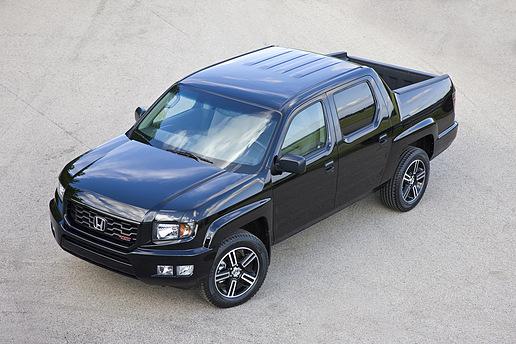Robert Bienenfeld,美国本田汽车公司环境与能源战略部的助理副总裁Robert Bienenfeld,在SAE 2014全球汽车年会的“由法规驱动的动力系统变革”分论坛上发表了讲话。
乘用车和商用车行业正在努力达到政府关于排放和燃油经济性的要求,同时消除一些意想不到的潜在问题。
分别由美国国家公路交通安全管理局(NHTSA)、美国国家环境保护局(EPA)、美国加州空气资源局(CARB)制定的企业平均燃油经济性(CAFE)、温室气体排放和零排放车辆的相关规定,让工程师和产品规划人员异常忙碌。
“政府能够通过税收和激励机制影响消费者的行为,同时也能够通过法律法规和激励机制来改变汽车制造商的做法”,美国丰田汽车公司环境与能源战略部的助理副总裁Robert Bienenfeld,在于美国底特律举行的SAE 2014全球汽车年会上的“由法规驱动的动力系统变革”分论坛上对观众这样说道。
Bienenfeld是SAE 2014全球汽车年会在科博中心(Cobo Center)举办的“由法规驱动的动力系统变革”圆桌会议的嘉宾之一,此会议属于年会上举办的AVL系列技术论坛(AVL Technology Leadership Center)中第二天的活动。
“我们希望看到,无论是对消费者还是对汽车制造商,亦或是对整个社会,法规都是公平的,也就是说法规应该在不造成不良后果的情况下,实现人们所期望的社会效益”,Bienenfeld说。
Bienenfeld认为,针对乘用车制定的燃油经济性法规是公平的,“他们使用户能够自由选择想要的车,汽车制造商也可以在各自的细分市场进行竞争。这些法规对所使用的不同技术一视同仁。在这个相对公平的竞技场上,有几十种不同的技术相互竞争,涌现出巨大的创新力。”
但当提到针对皮卡的燃油经济性规定时,Bienenfeld的评价就显得不那么顺耳了:“我们看到针对卡车的规定是不平衡的——对小卡车更严格,对大卡车更宽松。这是一种很明显的倾向。我认为,法规应该一视同仁,但事实却并非如此——至少未来五年不是。这造成的结果是大卡车享有补贴,但汽车和小卡车没有,这对OEM的竞争来说不是件好事。坦白讲,这对消费者也没什么好处。”
在问答环节,美国环保局交通和空气质量办公室主任Christopher Grundler就被提问,要求他就管理的公平性做出评价。
“Robert(Bienenfeld)和我就对卡车管理的公平性这个问题至少已经争论了三年了”,他说,“当然,怎么看待公平和人们所处的立场有关。坦白讲,在我们共同制定了这些标准之后,我们很确信,大型卡车的制造商将无法跟上乘用车进步的脚步”。
“所以我们对前几年的政策进行了调整,来回应他们提出的数据和观点。那么这样做是否是不公平的呢?对本田这种不生产大卡车的公司来说显然不太有利。但是对于那些生产大卡车的公司来说,我们不做这个改变,他们才会认为是不公平的。”
本田生产的唯一的全尺寸皮卡车型将于2014年年中停产。全新的Ridgeline皮卡将在两年内上市。
由在本田美国阿拉巴马有限公司生产的全尺寸皮卡Ridgeline将于2014年年中停产。全新的Ridgeline皮卡将在两年内上市。
另一项影响乘用车的规定是,要求汽车制造商提供一定数量的零排放汽车(ZEV)(通过插电式混合动力车,电池动力车或燃料电池车来完成),使其达到销售额的一定百分比。除了加州以外,这项有关ZEV的要求已经被纽约州、新泽西州、佛蒙特州、马里兰州、马萨诸塞州、俄勒冈州、康涅狄格州、罗德岛和缅因州所采纳。
Bienenfeld 说:“这10个州的销售额占美国总销售量的30%以上。对于某些公司,这个比例可以达到40%,甚至超过50%”
Bienenfeld认为应该重新思考生产ZEV的比重,因为它与插电式混合动力车(PHEV)有关。“市场上现在已经有一些PHEV了,我们可以看到,它们每年在电动模式下行驶的里程数比你想像的更多。”比南菲尔德之前在接受《汽车工程》访问时说。
政府法规也在悄然改变着商用车的生产开发的整体情况,从重型皮卡、垃圾车,到校车和拖拉机拖车都是如此。
康明斯公司发动机工程业务部副总裁Jennifer Rumsey说:“从今年开始,美国有史以来第一次将商用车也列入了温室气体排放的监管范围。”
法规的第一个阶段将不同应用中的共同组件发动机和整车进行了区别对待。 “这样来监管一个复杂的行业相对来说比较简单而有效,而且我们已经开始看到这样做的好处了。” Rumsey说。
2014年2月宣布的法规的第二阶段“旨在推动更深入、更显著的进步”, Rumsey补充说,“在第二阶段必须关注到第一阶段所没有涉及到的技术,比如变速箱和拖车的相关技术,并且要考虑如何充分利用整合这些组件所带来的优势”。
作者: Kami Buchholz
Robert Bienenfeld, Assistant Vice President, Environmental and Energy Strategy at American Honda Motor Co., Inc., speaks during the "Regulatory Driven Impacts On Powertrain" session at SAE 2014 World Congress.
The passenger vehicle and commercial vehicle industries are working to meet government regulations for emissions and fuel economy while ironing out potential unintended issues.
CAFE (corporate average fuel economy), greenhouse gas emissions, and zero-emission-vehicles mandates from NHTSA (U.S. National Highway Traffic Safety Administration), the U.S. EPA, and CARB (California Air Resources Board), respectively, are keeping engineers and product planners busy.
“Government can affect what consumers do with taxes and incentives, and government can affect what automakers do with rules, regulations, and incentives,” Robert Bienenfeld, Assistant Vice President, Environmental and Energy Strategy at American Honda Motor Co., Inc., intoned to an SAE 2014 World Congress audience in Detroit.
Bienenfeld was one of the panelists participating on the "Regulatory Driven Impacts On Powertrain" program in the AVL-sponsored ballroom at Cobo Center on day two of World Congress activities.
“We would all like to see that regulations be fair amongst consumers and that they be fair amongst automakers and be fair to society, meaning the rules should achieve the desired social benefits without unintended consequences,” Bienenfeld said.
Fuel-economy regulations for passenger cars are fair, according to Bienenfeld: “They allow customers to choose the cars freely, and automakers can compete within their segments. The regulations are indifferent as to what technologies we apply. And there’s an enormous amount of innovation with literally dozens of technologies competing on a relatively fair battlefield.”
But Bienenfeld’s words were less flattering when he gave his evaluation of fuel-economy mandates on pickup trucks: “What we see is that trucks have slanted regulations—more stringency for smaller trucks and less stringency for larger trucks. That’s a given. But the line should be parallel, and it’s not—at least for the next five years. As a result, it looks like large trucks are subsidized by cars and smaller trucks, which is not good for OEM competition. And frankly, it’s not the best deal for consumers either."
Christopher Grundler, Director of the EPA's Office of Transportation and Air Quality, was asked to comment on mandate fairness during the audience question-and-answer session.
“Robert and I have been arguing about this for at least three years now—this fairness question with respect to trucks," he said. "Of course, fairness is dependent on where one sits. The honest answer is that the manufacturers of large trucks were pretty convincing at the end of our collaboration of creating these standards that they would not be able to meet the same pace of improvement as passenger cars.
“So we changed the slope in the early years to respond to the data and the arguments they presented. So is that unfair? Obviously unfair to Honda, which doesn’t make those large trucks. For the people who do make those large trucks, they thought it would be unfair if we didn’t make this change.”
Production of Honda’s only full-size pickup model ends in mid-2014. An all-new Ridgeline pickup truck will reach the marketplace in less than two years.
Current production of the Honda Ridgeline ends in mid-2014. The full-size pickup (Ridgeline Sport shown) is built exclusively by Honda Manufacturing of Alabama LLC in Lincoln, AL. An all-new Ridgeline will be in the marketplace in less than two years.
Another regulation affecting passenger vehicles requires automakers to deliver a certain number of ZEV credits (via some portion of plug-in hybrid vehicles, battery-electric vehicles, or fuel-cell vehicles) as a percentage of sales. In addition to California, the ZEV mandate has been adopted by the states of New York, New Jersey, Vermont, Maryland, Massachusetts, Oregon, Connecticut, Rhode Island, and Maine.
“And those 10 states count for more than 30% of U.S. sales. For some companies that can be as much as 40% or even 50% of sales,” said Bienenfeld.
A re-thinking of the ZEV credits as it relates to PHEVs is needed, according to Bienenfeld. “Now that there have been some (PHEVs) in the market, we can see that plug-in hybrid vehicles deliver a lot more annual electric miles than you would think,” Bienenfeld told Automotive Engineering magazine.
Government regulations are also changing the product-development landscape for commercial vehicles, which range from heavy-duty pick-up trucks, garbage trucks, and school buses to tractor-trailers.
Said Jennifer Rumsey, Cummins Inc.’s Vice President of Engineering - Engine Business: “Starting this year for the first time ever in the U.S., commercial vehicles are regulated for greenhouse gas emissions.”
Phase one of the regulation treats the engine, which is a common component across many of the different applications, and the vehicle itself separately. “It’s a relatively simple and effective way of regulating a complicated industry, and it’s already providing benefits,” said Rumsey.
Announced in February 2014, phase two of the regulation “is intended to drive further and more significant advancements,” said Rumsey, adding, “It must address additional technologies that aren’t included in phase one, like transmissions and trailers, and consider how to capture adequately the benefits of integrating these components together.”
Author: Kami Buchholz
等级
打分
- 2分
- 4分
- 6分
- 8分
- 10分
平均分


